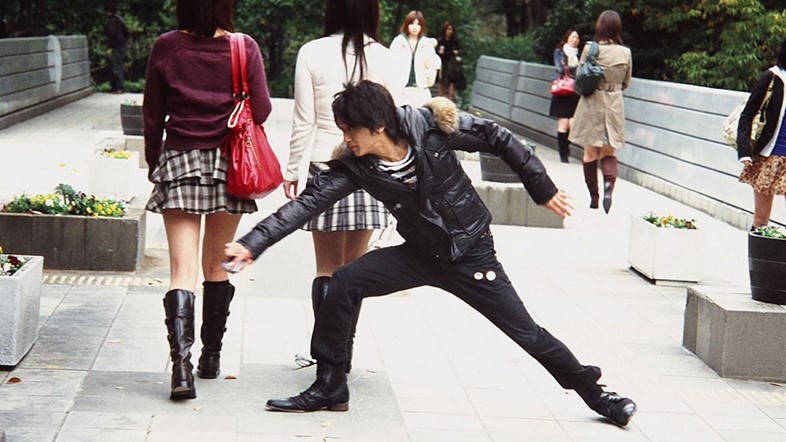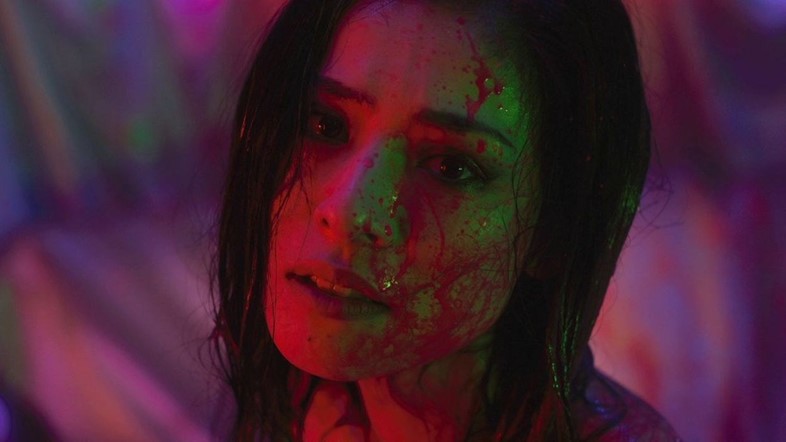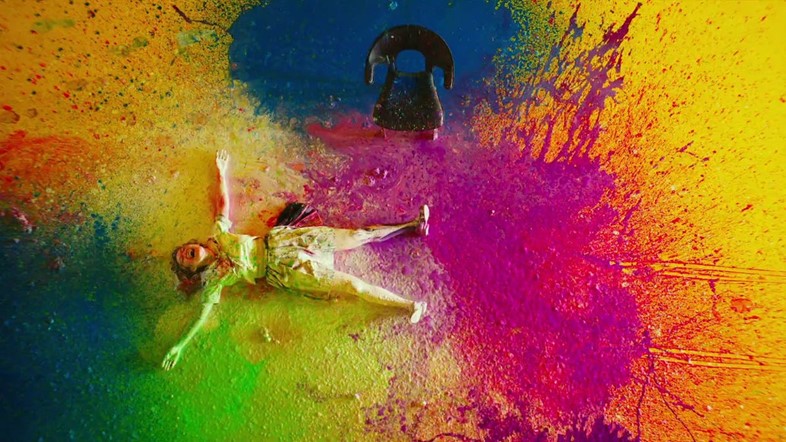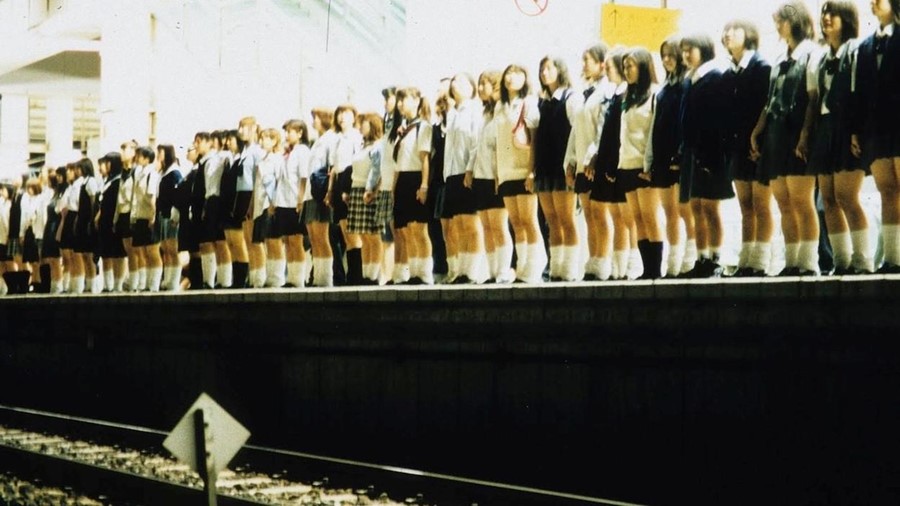As the BFI prepares a sample of Sion Sono’s works to screen as part of its ongoing ‘Japan 2020’ season, AnOther selects five of his most unforgettable creations
“Movies need poison”, or so claims Sion Sono, the renegade arthouse director who has cemented a reputation over the past couple of decades as the enfant terrible of Japanese cinema.
Brought up on a diet of B-movies, horror and porn after running away from home to write poetry, the workaholic filmmaker has, with little surprise, made it his mission to challenge perceptions of taste through his transgressive brand of cinema. Easily recognisable for his wide-brimmed hat, rectangular glasses and cigarette-in-hand, Sono has been invariably described by his co-workers as either a megalomaniac or “great fun” to work with, thanks to his limitless gung-ho style. Either way, Sono’s appeal endures to this day as he remains one of the most singular forces pushing Japanese independent cinema forwards.
Through his visceral brand of divisive filmmaking, which often incorporates gratuitous nudity, violence, and a kaleidoscopic use of colour, Sono has become an unlikely darling of the film festival circuit. But in recent years he’s also straddled high-profile works with the likes of Amazon Prime (avant-garde, Transylvania-set horror series Tokyo Vampire Hotel) and Netflix (true story serial killer flick The Forest of Love). In 2020 he claims he’s preparing to release of “the wildest movie I’ve ever made” – the Nicolas Cage crime vehicle Prisoners of the Ghostland.
A chameleonic force with a penchant for controversy and a tendency to not finish writing his films until he’s halfway through shooting, Sono’s work is uniformly manic, perverse, and challenging. As the BFI prepares a sample of his works to screen as part of its ongoing ‘Japan 2020’ season, AnOther jumps in the deep to select five of his most unforgettable creations.
Suicide Club, 2001
“Almost all Japanese people hate the movie Suicide Club,” says the filmmaker of his 2001 breakthrough. There’s no better place to begin, then, than one of the most polarising efforts in his canon.
Jumping on the bloody coattails of crossover hits like Ringu and Audition, Sono’s offering to the then-popular ‘J-horror’ genre is actually one of his most conventional stories ... for the first two acts, at least. After a violent and shocking opening that sees a class of high school students commit mass suicide at a busy train station, this spooky Y2K-anxiety horror-mystery finds a group of detectives searching for answers as a dangerous phenomenon begins to spread across Japan via a mysterious website.
It introduces key Sono tropes: guerrilla footage, dynamic handheld camerawork, and surreal use of music, as the director offers a bold subtext to Japan’s early-2000s suicide epidemic (the result of a two-decade struggle with the economy and unemployment). But it’s the sudden tonal shift in the third act that makes Suicide Club such a memorable piece of work. When a glam-rock inspired villain unexpectedly breaks out into song, prefacing a series of bizarre conclusions to the film’s main plot, audiences will begin to understand that this is a director less interested with narrative convention than he is with making a statement.

Love Exposure, 2008
Sono’s magnum opus is famed for its bizarre premise and four-hour runtime, but don’t be put off: this is a balls-to-the-wall sensory overload of the kind only Japan can deliver. The story of a tormented student forced to sin in order to appease his depressed priest father, Love Exposure follows Yu as he seeks “an erection from the heart” via acrobatic upskirt photography as he searches to find his one true love in the wake of his mother’s death.
Partly inspired by the director’s experiences with a Catholic church “cult”, Love Exposure is a depraved and sprawling romp that incorporates teen romance, kung-fu, classical music, the yakuza and several fountains of blood. Edited with the energy of a bull in a china shop, and as visually vibrant as the pachinko parlours of downtown Shibuya, Love Exposure is rife with thrills from start to finish.
Convoluted side plots, larger-than-life characters and narrative U-turns ensure that Love Exposure remains the gold standard against which all of Sono’s other films are judged. It picked up the FIPRESCI Award at Berlin Film Festival, and Sono has never looked back.

Himizu, 2011
The Tōhoku earthquake and tsunami of 2011 weighs heavily over Himizu, and Sono himself was profoundly affected by the 16,000 deaths and economic fallout of the costliest natural disaster in history. It would take a gruelling 2,137 cuts to get the 35 hours of film edited down to its two-hour runtime, but fans expecting another Love Exposure, be warned: this bleak character drama is a different kettle of fish entirely.
The film focuses on depressed teenager Sumida, who breaks down after accidentally beating his abusive father to death with a cinder block. But it’s the dysfunctional “family” of homeless neighbours at a dirty boat-renting business that provides much of the film’s dynamism. They are characters plucked from a host of Sono’s other films, converging at a desolate floodplain having been displaced from their own cinematic properties. And if it looks like it was filmed on the fly on the side of the road, it probably was: “Usually before filming there is a planning stage and a test on location,” says one actor. “But Sono goes straight to shooting without check or rehearsal.”
As lives spiral out of control, the message of Himizu remains thinly veiled. “Young people have never known our country in turmoil,” a teacher offers his students early on. “But nobody in the world has experienced atrocities like Japan.” Maintaining life at all costs is a palpable struggle in this greying, post-apocalyptic feature, but as Sono himself embodies, there is no race fitter than the Japanese to rise up from the rubble.

Guilty of Romance, 2011
The third entry in Sono’s loosely related ‘hate trilogy’ doesn’t always get the same attention as its brethren. But even alongside Love Exposure and Cold Fish (a violent and hysterical re-telling of a real-life killing spree committed by a Tokyo pet shop owner in the 80s), Guilty of Romance’s technicolour exploration of sexual liberty in Shibuya’s love hotel district is a spectacle not easily forgotten.
Starring Sono’s own wife Megumi Kagurazaka as Izumi, a demure and servile wife who undergoes a sexual awakening after taking on work as a nude model, Guilty of Romance features murder, femme fatales and copious neon lights as it embraces a dark and Lynchian narrative. A provocative and psychological tour-de-force bolstered by Sono’s signature visual flair and unpredictable writing, Guilty of Romance should rank high on any list of films about Tokyo’s seedy, metropolitan underbelly.

Antiporno, 2016
This postmodern throwback to the Japanese ‘Roman Porno’ era of 70s sexploitation cinema is one of the most visually spectacular of Sono’s remit, and that’s despite it taking place almost entirely within a single multi-coloured apartment.
Clocking in at a lean 75 minutes, this vivid exploration of the psychological trauma and mental anguish of exploited pink film actors is expertly reflected through the film’s spectacular sets, clashing costumes and saturated colours. Designed to look like a contemporary art exhibition, scored with elegant classical music, and executed like a stage play, Antiporno also uses titillating violence and degrading sexual activity to get a succinct and critical message across.
Schizophrenic characters and a mid-feature twist make Antiporno an addictive ride right to the end, but it’s the glorious, paint-splattered climax that makes this racy feature an experience to remember.
Explore the British Film Institute’s Japan 2020 season here.
